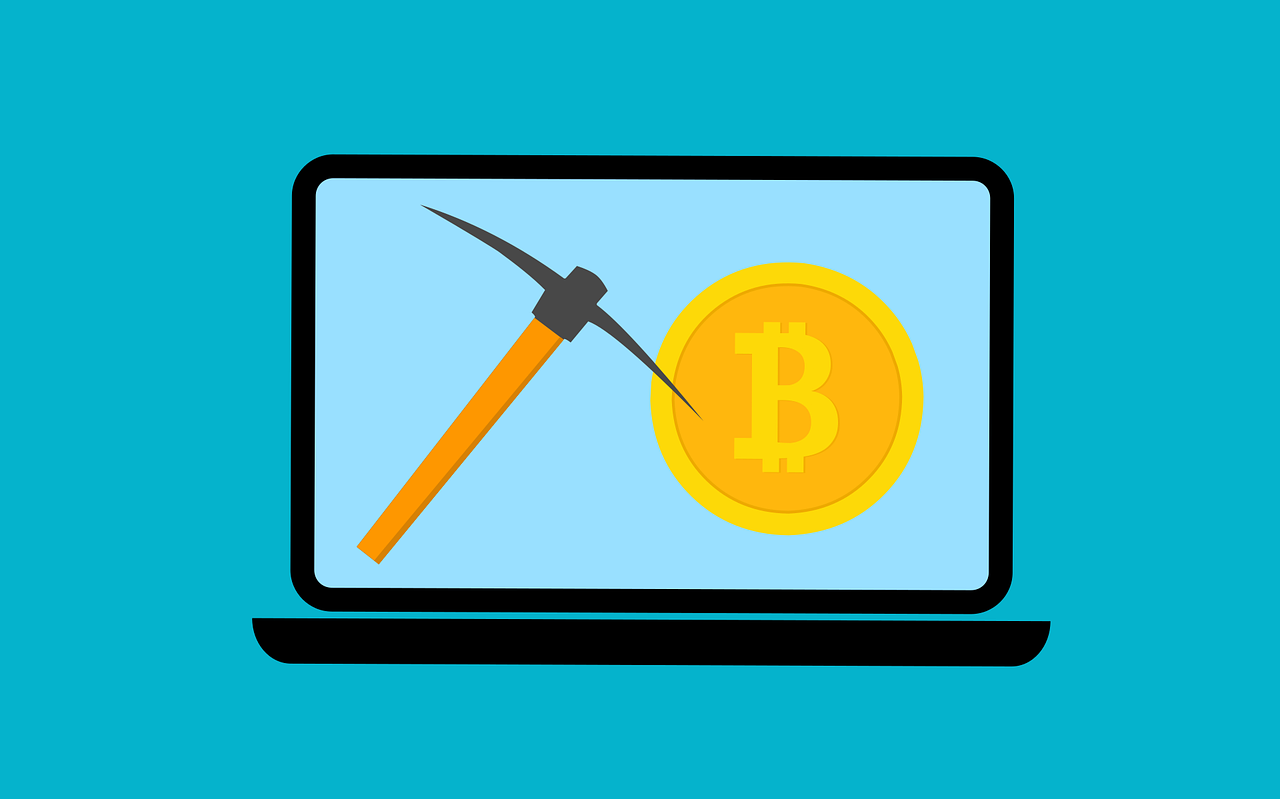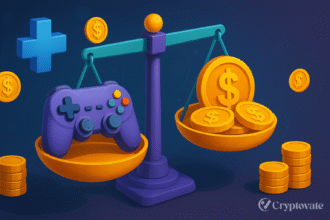– Ad –
| Getting your Trinity Audio player ready... |
Cryptocurrency mining has become a widely discussed topic in recent years, with many individuals looking for ways to earn passive income in the digital world. In this article, we will delve into the secrets of crypto mining and reveal the strategies that can help you make money while you sleep. With the rise of cryptocurrencies like Bitcoin and Ethereum, mining has become a lucrative venture for tech-savvy individuals. By solving complex mathematical puzzles, miners are rewarded with newly minted coins. But how exactly does this process work, and is it still profitable? Join us as we explore the ins and outs of crypto mining, covering everything from the hardware required to the different mining algorithms. We’ll also reveal some lesser-known tips and tricks to maximize your mining profits. Whether you’re new to the world of cryptocurrency or a seasoned investor, this article will provide you with the information you need to get started or take your mining game to the next level. Don’t miss out on the opportunity to earn passive income in the fascinating world of crypto mining.
- How Does Crypto Mining Work?
- The History and Evolution of Crypto Mining
- Benefits of Crypto Mining
- Risks and Challenges in Crypto Mining
- Choosing the Right Cryptocurrency to Mine
- Hardware and Software Requirements for Crypto Mining
- Setting Up a Crypto Mining Rig
- Strategies for Maximizing Profits in Crypto Mining
- Conclusion and Future Prospects of Crypto Mining
- FAQs
How Does Crypto Mining Work?
Explanation of Blockchain Technology
Blockchain is a decentralized ledger technology that underpins cryptocurrencies like Bitcoin and Ethereum. It records transactions in a transparent and immutable manner across a network of computers. Each block in the chain contains a list of transactions, and once a block is added, it cannot be altered without altering subsequent blocks, ensuring security and trust in the system.
Role of Miners in the Blockchain Network
Miners are crucial participants in the blockchain ecosystem. Their role involves solving complex cryptographic puzzles that validate transactions and add them to the blockchain. This process ensures the integrity of the network, as miners compete to solve these puzzles in a system known as Proof of Work (PoW).
Process of Mining: Proof of Work vs. Proof of Stake
- Proof of Work (PoW): This mechanism requires miners to solve computational problems to validate transactions and create new blocks. It is resource-intensive and requires significant computing power.
- Proof of Stake (PoS): Unlike PoW, PoS selects validators based on the number of coins they hold and are willing to “stake.” This method is more energy-efficient and reduces the need for extensive computational resources.
Rewards: Earning Cryptocurrency through Mining
Miners are rewarded with newly created cryptocurrency and transaction fees for their work. The reward system varies among different cryptocurrencies. For example, Bitcoin’s block reward halves approximately every four years, a process known as “halving,” which controls the supply of new coins.
The History and Evolution of Crypto Mining
Early Days: Bitcoin and the First Miners
Bitcoin, created by Satoshi Nakamoto in 2009, marked the beginning of crypto mining. Initially, mining was conducted using ordinary home computers with CPUs. As Bitcoin’s popularity grew, the competition and complexity of mining increased, leading to the evolution of mining technology.
Evolution of Mining Equipment: CPUs to ASICs
- CPUs to GPUs: The transition to Graphics Processing Units (GPUs) improved mining efficiency due to their superior parallel processing capabilities.
- ASICs: Application-Specific Integrated Circuits (ASICs) were later developed to optimize mining further. These specialized devices are designed for mining specific cryptocurrencies, offering high performance but at a higher cost.
Emergence of Mining Pools
Mining difficulty rose as more participants joined the network, making solo mining less feasible. Mining pools emerged as a solution, allowing miners to combine their computational power and share rewards based on their contributions.
Regulatory Developments and Market Impact
The growing popularity of crypto mining has led to increased regulatory scrutiny. Governments worldwide are implementing regulations to address concerns related to taxation, security, and environmental impact, influencing the operations and profitability of mining activities.

Benefits of Crypto Mining
Potential for Passive Income
Crypto mining provides an opportunity to earn passive income by validating transactions and receiving cryptocurrency rewards. With the right setup, individuals can profit from their mining activities without continuous active involvement.
Contribution to Blockchain Security
By participating in mining, individuals contribute to the security and stability of blockchain networks. Miners play a critical role in preventing fraud and maintaining the integrity of the transaction ledger.
Opportunities for Financial Inclusion
Crypto mining can promote financial inclusion by enabling individuals, especially in regions with limited access to traditional banking, to participate in the cryptocurrency ecosystem and earn income.
Diversification of Investment Portfolio
Mining offers a unique way to diversify investment portfolios. Instead of buying and holding cryptocurrencies directly, mining allows for exposure to the digital asset market through the process of generating new coins.
Risks and Challenges in Crypto Mining
High Initial Investment and Operating Costs
Setting up a mining operation requires substantial initial investment in hardware and infrastructure. Additionally, ongoing costs such as electricity, cooling, and maintenance can be significant.
Volatility of Cryptocurrency Prices
The value of cryptocurrencies is highly volatile, which can affect the profitability of mining operations. Price fluctuations can lead to sudden changes in mining rewards and financial viability.
Regulatory and Legal Risks
The regulatory landscape for crypto mining is continually evolving. Miners must navigate varying legal requirements and potential restrictions in their jurisdictions, which can impact their operations.
Technical Challenges and Maintenance
Mining operations involve complex hardware and software systems that require ongoing technical expertise. Issues such as hardware failures, software bugs, and network configurations can pose significant challenges.
Environmental Impact and Energy Consumption
Crypto mining, particularly PoW-based mining, consumes a large amount of energy. This has raised environmental concerns and led to calls for more sustainable mining practices.
Choosing the Right Cryptocurrency to Mine
Factors to Consider: Profitability, Difficulty, and Market Trends
When selecting a cryptocurrency to mine, consider factors such as profitability, mining difficulty, and market trends. Tools like mining calculators can help evaluate potential returns and associated costs.
Overview of Popular Cryptocurrencies for Mining
- Bitcoin (BTC): The most valuable cryptocurrency, requiring significant investment in ASICs due to high competition.
- Ethereum (ETH): Known for its use of GPUs in mining, though it is transitioning to PoS.
- Litecoin (LTC): Offers lower mining difficulty and faster block generation times compared to Bitcoin.
Niche Cryptocurrencies with Mining Potential
Smaller or emerging cryptocurrencies may present mining opportunities with lower competition. Examples include Ravencoin (RVN), Monero (XMR), and Zcash (ZEC), each offering unique mining algorithms and potential benefits.
Also Read: Decoding the Cryptocurrency Mystery: Understanding the Bitcoin Halving Cycle
Hardware and Software Requirements for Crypto Mining
Essential Mining Hardware: GPUs, ASICs, and CPUs
- GPUs: Suitable for mining a variety of cryptocurrencies like Ethereum due to their high parallel processing power.
- ASICs: Provide the best performance for specific cryptocurrencies such as Bitcoin but come with higher costs.
- CPUs: Generally less efficient but can be used for certain low-difficulty cryptocurrencies.
Importance of Power Supply Units and Cooling Systems
Reliable power supply units (PSUs) and efficient cooling systems are critical to maintaining stable mining operations and preventing hardware damage due to overheating.
Recommended Mining Software and Tools
Popular mining software includes CGMiner, BFGMiner, and NiceHash, which provide user-friendly interfaces for managing mining activities, monitoring performance, and optimizing settings.
Selecting the Right Mining Pool
Joining a mining pool can increase the likelihood of earning rewards. When choosing a pool, consider factors such as fees, payout methods, and the pool’s reputation.
Setting Up a Crypto Mining Rig
Choosing a Suitable Location for Mining Operations
Selecting the right location is crucial for a successful mining operation. Factors to consider include:
- Electricity Costs: Opt for locations with low electricity rates to reduce operational expenses.
- Cooling Solutions: Ensure the area has adequate ventilation and cooling options to manage heat generated by mining hardware.
- Noise Levels: Mining rigs can be noisy, so choose a location where noise will not be a disturbance.
Step-by-Step Guide to Assembling a Mining Rig
- Gather Components: Obtain necessary hardware, including GPUs or ASICs, a motherboard, power supply, cooling systems, and storage.
- Assemble the Hardware: Connect the components, ensuring compatibility and proper connections.
- Install Software: Set up mining software, drivers, and necessary operating system configurations.
- Configure Settings: Optimize settings for performance, including overclocking GPUs and configuring mining software parameters.
Configuring Software and Network Settings
- Mining Software Configuration: Input pool addresses, wallet information, and other necessary settings into the mining software.
- Network Setup: Ensure a stable and secure internet connection for uninterrupted mining activities. Configure firewall and security settings to protect the mining rig.
Ensuring Efficient Operation and Monitoring Performance
- Monitoring Tools: Use monitoring tools to track performance metrics such as hash rate, temperature, and power consumption.
- Maintenance: Regularly clean hardware components, update software, and troubleshoot any issues that arise to maintain optimal performance.
Strategies for Maximizing Profits in Crypto Mining
Optimizing Hardware Efficiency
- Overclocking: Increase the performance of GPUs or ASICs by overclocking, but be cautious of potential overheating and hardware stress.
- Undervolting: Reduce power consumption by undervolting components without significantly impacting performance.
Reducing Energy Costs through Green Energy Solutions
- Renewable Energy: Utilize renewable energy sources such as solar or wind power to lower electricity costs and minimize environmental impact.
- Energy-Efficient Hardware: Invest in energy-efficient mining hardware to reduce overall power consumption.
Timing the Market: When to Hold or Sell Mined Coins
- Market Analysis: Monitor cryptocurrency market trends to determine the best times to sell mined coins for maximum profit.
- Holding Strategy: Consider holding onto mined coins during bullish market conditions to benefit from potential price increases.
Utilizing Mining Calculators for Profit Analysis
- Profitability Calculators: Use online mining calculators to estimate potential earnings based on current difficulty, hash rate, and electricity costs.
- Cost-Benefit Analysis: Regularly perform cost-benefit analyses to ensure that mining operations remain profitable and adjust strategies as necessary.
Conclusion and Future Prospects of Crypto Mining
Recap of Crypto Mining’s Role in the Cryptocurrency Ecosystem
Crypto mining is essential to the cryptocurrency ecosystem. It performs the critical function of validating and recording transactions on the blockchain, thereby ensuring the network’s integrity and security. Miners contribute to the decentralized nature of cryptocurrencies by competing to solve complex mathematical problems, which in turn prevents fraud and double-spending. Through this process, mining not only maintains the blockchain but also introduces new cryptocurrency into circulation, providing miners with a means to earn passive income.
Future Trends: Sustainability and Technological Advancements
The future of crypto mining is poised for several key developments:
- Transition to Proof of Stake (PoS): Many cryptocurrencies, including Ethereum, are shifting from Proof of Work (PoW) to Proof of Stake (PoS). PoS reduces the environmental impact of mining by selecting validators based on their stake in the network rather than their computational power.
- Energy Efficiency Innovations: As concerns about energy consumption grow, the mining industry is likely to see advancements in energy-efficient hardware and practices. This includes the development of more efficient ASICs and GPUs, as well as the increased use of renewable energy sources.
- Regulatory Evolution: Governments and regulatory bodies will continue to shape the mining landscape through new regulations aimed at addressing environmental impact, financial stability, and legal compliance. Miners must stay informed and adapt to these changes to ensure continued operation.
- Integration of AI and Machine Learning: Emerging technologies like AI and machine learning may play a role in optimizing mining operations, predicting market trends, and improving decision-making processes.
Final Thoughts on Earning Passive Income through Crypto Mining
Crypto mining offers a unique opportunity to earn passive income by participating in the maintenance and security of blockchain networks. However, successful mining requires careful consideration of hardware investments, operational costs, and market dynamics. As the industry evolves, miners who stay ahead of technological advancements and regulatory changes will be well-positioned to maximize their earnings and contribute to the growing cryptocurrency ecosystem.
FAQs
What is Crypto Mining?
Crypto mining is the process of validating and recording transactions on a blockchain network. Miners use computational power to solve complex mathematical problems, which verifies transactions and adds them to the blockchain. Successful miners are rewarded with cryptocurrency.
How Do I Start Crypto Mining?
To start crypto mining, you need to:
- Choose a cryptocurrency to mine.
- Invest in the necessary hardware (GPUs, ASICs).
- Install and configure mining software.
- Join a mining pool or mine solo.
- Monitor and maintain your mining rig.
Is Crypto Mining Profitable?
Crypto mining can be profitable, but it depends on several factors including the price of the cryptocurrency, mining difficulty, electricity costs, and initial investment in hardware. Using profitability calculators can help estimate potential earnings.
What Are the Environmental Impacts of Crypto Mining?
Crypto mining, especially PoW-based mining, consumes a large amount of energy, leading to significant environmental concerns. Efforts are being made to develop more energy-efficient mining technologies and practices, including the use of renewable energy sources.
What Are the Risks of Crypto Mining?
The risks of crypto mining include high initial investment and operational costs, volatility of cryptocurrency prices, regulatory and legal challenges, technical difficulties, and environmental impact. Miners need to manage these risks to ensure profitability and sustainability.

















